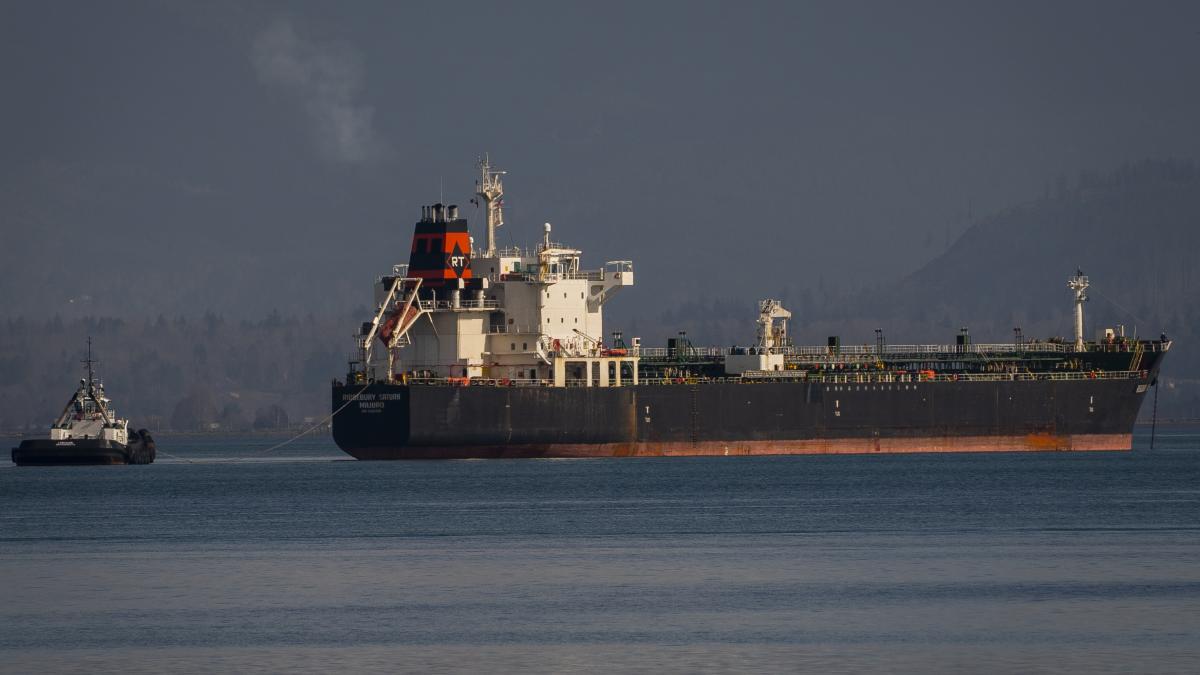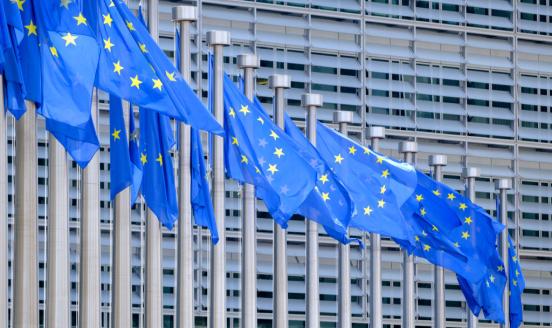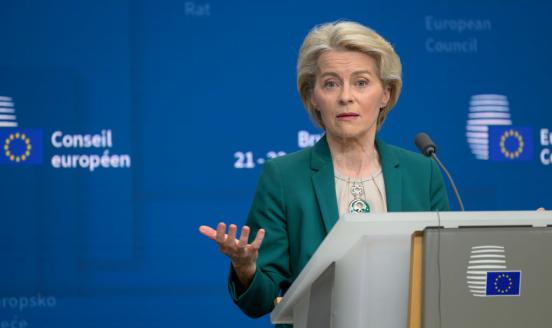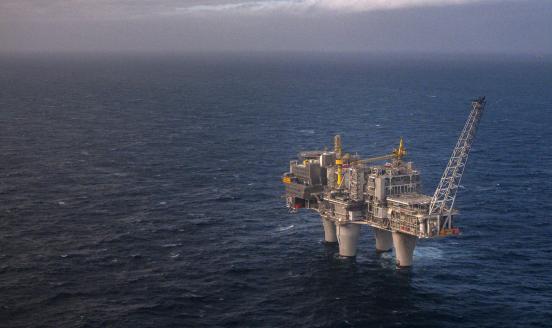Will the European Union price cap on Russian oil work?
The G7 Russian oil price cap is an ambitious but untested instrument. While pitfalls exist, the cap has the potential to be the most potent sanction.

The Western response to the unprovoked Russian invasion of Ukraine has entered a new and more ambitious phase. On 5 December, G7 and EU nations agreed on their price cap on Russian oil, which comes alongside the EU’s embargo on Russian crude oil imports. The cap is significant because, since 2006, over 60% of Russia’s federal budget revenues have been from oil and gas, with the contribution from oil around five times higher than that from natural gas.
The G7’s aspirations are bold: to restrict Russian oil revenue while not increasing global oil prices. The myriad of factors that interfere with oil markets make it difficult to draw any quick conclusions on the cap’s effectiveness. Here, we try to provide a structure to evaluate the likely consequences of the cap and decide whether the G7 will ultimately be able to declare success.
Economics behind the cap
When considering the cap’s effectiveness, it is helpful to think through three variants of a Western oil embargo on Russia.
The starting point is an embargo that does not seek to prevent Russia exporting oil to third countries. The EU’s own oil embargo bans the import of seaborne crude oil from Russia. In 2021, 45% of Russian crude oil exports flowed to the EU, or around 3 million barrels per day (mb/d). By 2023, a little over 0.25mb/d of this oil will continue as Germany and Poland have committed to end pipeline imports via the northern Druzhba branch, while Bulgaria has an exemption to continue importing Russian seaborne oil.
The immediate effect of this embargo is to lower demand for, and therefore the relative price of Russian oil. However, oil markets are interconnected. As the EU enters global markets to replace its Russian purchases, some alternative buyers will be found for Russian barrels. In a perfect market, global oil trade would simply rebalance.
In reality, logistical and political frictions prevent this. As the EU increasingly shunned Russian oil in past months, Russia found new buyers for around 1mb/d of displaced crude oil, but did so only by accepting substantial discounts to global prices. Russia will now need to find buyers for a further 0.8mb/d exports via western ports.
The second variant is where the EU and G7 allies do not only refuse to buy Russian oil, but also attempt to prevent Russia from exporting oil elsewhere. The EU’s initial plan was to include this feature in its embargo starting 5 December by banning EU firms from providing “technical assistance, brokering services of financing or financial assistance, related to the transport” of Russian oil to third countries. This aimed to amplify the logistical frictions that prevent Russia from finding new buyers, reducing the volume of Russian exports, and making the discount that Russia must accept to sell any oil even larger. The EU was able to take this step because member countries play an enormous role in the global shipping insurance market. Prior to the invasion in Ukraine, the EU, G7 and Norway insured over 85% of ships carrying Russian crude oil, 65% of which they still insure today.
A risk with this plan was that it may have led to higher global oil prices. While the EU was bidding up the price of non-Russian oil, it would have prevented Russian exports from meeting displaced demand elsewhere. Something similar happened in the natural gas market, where Russian supply cuts to the EU dramatically increased global prices. The EU was able to redirect demand to the global LNG market while Russia cannot redirect its gas exports.
Fearful of such global economic consequences, the US lobbied for a third variant of an EU oil embargo: one in which the EU continued providing insurance (and now shipping) services for tankers transporting Russian oil, but only if transactions verifiably occurred below a price cap.
Theoretically, if the price cap is set at a binding level and Russia complies, the proposal achieves the best of both worlds. Rents to the Russian state are reduced while exports are maintained, and oil markets are calmed. This is the optimal outcome that the G7 architects are hoping for in the coming months.
After long negotiations, on 2 December, the EU agreed to set the price cap at $60/barrel, with an adjustment clause to ensure the cap remains below 5% of Russian market prices. For context, Russian (Urals) oil was recently reported to sell at $52/barrel while in recent months a more typical price has been closer to $65/barrel.
Russia’s move: the price cap in reality
In response, Russia must choose whether to comply with or reject the cap.
- Russian compliance
If Russia complies with the cap, exports will continue to flow, and the question becomes only whether the Kremlin’s revenue is impacted. The obvious risk here is that the price level is set too high.
In a worst-case scenario, the G7 actions may even increase Russian revenue. For months, markets have been discounting a barrel of Russian oil by $25, due to associated logistical and political frictions. Setting the price level at $60/barrel signals the strong desire from the G7 to keep Russian oil flowing to market. G7 endorsement offers encouragement to trade Russian oil at the capped price, and this will increase Russian revenue if the price cap is set at a level less than $25 below market prices. This risk is non-negligible given that Brent trades today at $80. The International Sanctions Group considered this risk as concretely occurring with a price cap set at $75/b. A more subjective risk lies over exactly how hard revenue should be hit. Even at a price of $60 per barrel, the Kremlin is still able to extract substantial rents, with government taxes scaling substantially above $25.
If the price level turns out to be binding, a second risk is monitoring compliance. The high price level may also represent an admission from the G7 that it does not believe it’s able to inflict a price far below market prices, because it would be extraordinarily difficult to monitor compliance with the cap.
Even assuming that an international administration system can be effectively run to ensure that no ship carries Russian crude priced above $60, side-payments will be almost impossible to monitor. Assuming the cap is binding, excess demand will exist for Russian oil at the price level. With prices unable to balance demand, it would be up to the Russian state, Russian companies, or international trading houses to extract whatever concessions help them choose who to sell to at a discounted price via ‘creative negotiating’. However, there might be a trade-off between how much of this extra revenue from ‘cheating the cap’ accrues to Russian owned companies and how much to international trading houses, which the G7 may be willing to remain blind to later.
- Russian Rejection
Russia has signalled that it will not comply with these sanctions. Vladimir Putin has repeatedly stated that Russia will not sell to any country who implements the cap, most recently drafting a Presidential decree prohibiting domestic companies buying and selling Russian oil to anyone that participates in the cap.
Assuming rejection, the G7’s price cap will default to an outright ban on G7-companies providing insurance or shipping services (like the ‘second variant’ of the EU embargo described above). Overnight, Russia will become the largest source of (G7-defined) illicit oil. For Russia to continue exporting, new ships, new insurances and new buyers willing to cooperate in a new system must be found.
It is not unreasonable to see this system being created. A US Treasury official confirmed estimates that up to 80-90% of Russian oil could continue to flow outside of the cap mechanism, and with six months to prepare, Russia has procured a shadow fleet. Success along this route for Russia would require open defiance from major non-G7 oil buyers, and lead to a bifurcated global oil market.
In addition, the Kremlin may cut exports to spite the cap to try to raise global oil prices. The logic of the cap is that Russia will not do so, as it would be unable to enjoy increased prices per barrel. However, this holds only if circumventing the cap is not possible. Even if cutting exports hurts Russia, the Kremlin may decide to do so as a signal of its willingness to suffer economic pain. This would show that the Kremlin will do what it takes to cause more pain to its adversaries.
However, it would be a risky strategy for Russia, potentially threatening Russia’s stature in OPEC+ and losing its status as the major global oil exporter alongside Saudi Arabia. Russia would have to hope for a quick victory as its actions could increase oil prices temporarily, but markets would rebalance, ultimately leaving a smaller share of the pie for Russia.
The coming oil stand-off
The EU’s embargo and G7 price cap will kickstart a period of escalating tension in oil markets.
Russia will use all its possibilities to circumvent the cap from day one, appearing likely initially to reject trade that is done based on the cap. It will want to demonstrate independence, put pressures on global oil markets, and avoid the cap becoming an entrenched instrument. Russia may cut exports with the goal of increasing global oil prices and exerting pressure on the G7 and EU alliance to back down. In line with this, Russia announced its intention to set a ‘price floor’ for its oil exports shortly after the cap was announced.
The G7 and EU alliance has promised to review the price of the cap every two months, adjusting it when deemed appropriate. The alliance will also bring forward a cap on Russian product exports (notably including diesel) in February, when the EU also prohibits its own imports. These effects will likely be even more substantial than for crude oil. The use of secondary sanctions for countries who do not respect the cap would mark a dramatic but possible escalation.
Meanwhile, OPEC will watch closely – alarmed by the concept of buyers setting (albeit one country’s) oil prices, and continually re-evaluating Russia’s strength as a partner in OPEC+. Success will also depend on wider global economic forces, such as decisions taken in China regarding COVID-19 lockdowns, where falling oil prices strengthen the hand of the G7.
Ultimately, the results of this power struggle will be determined by whether Russia can find solutions to circumvent the cap, how urgently it needs the money from current oil sales, and how sensitive the EU and G7 are economically and politically to the spectre of rising oil prices.
Establishing the cap was a sensible first move. The allies of Ukraine must now look to strengthen and reinforce the cap: by ensuring that it is binding; by increasing their own economies resilience to oil price fluctuations, and by developing tools for monitoring and reducing non-compliance.



